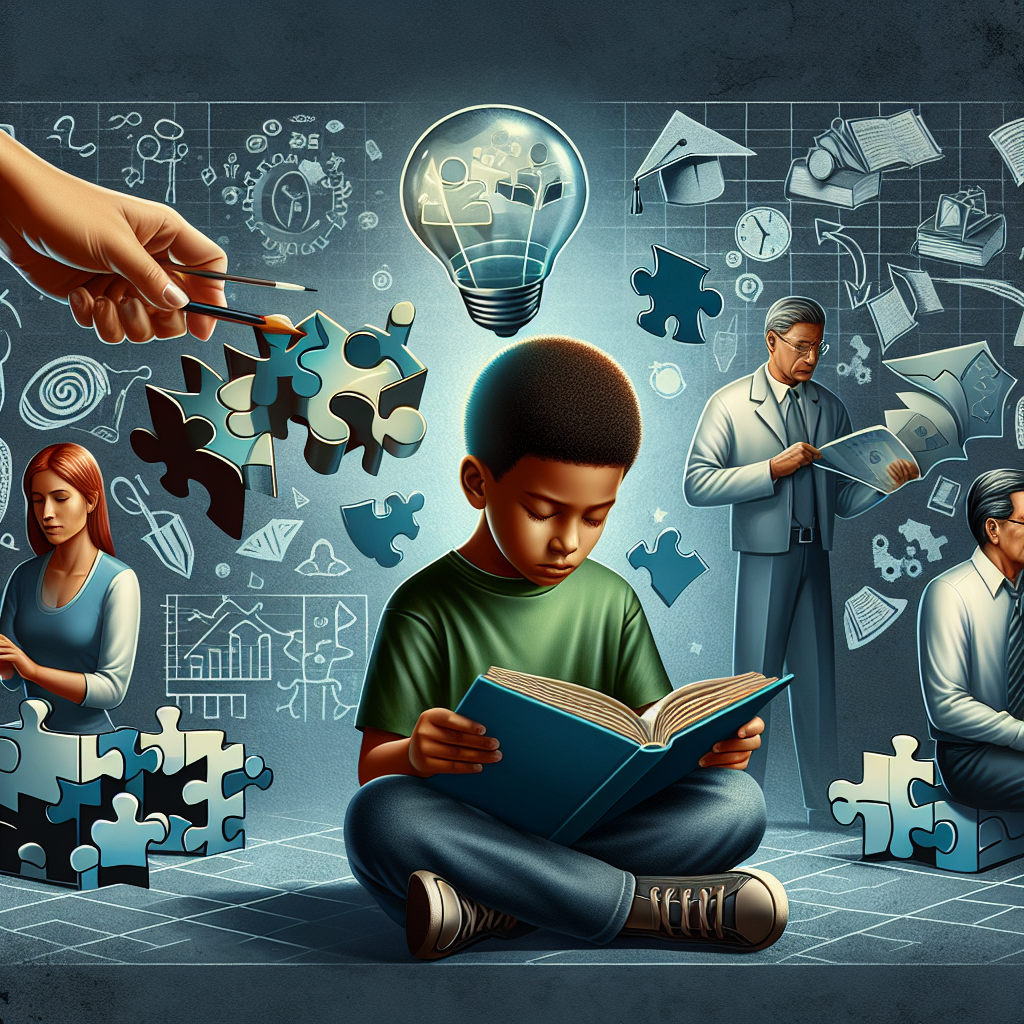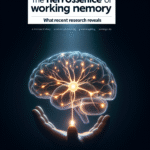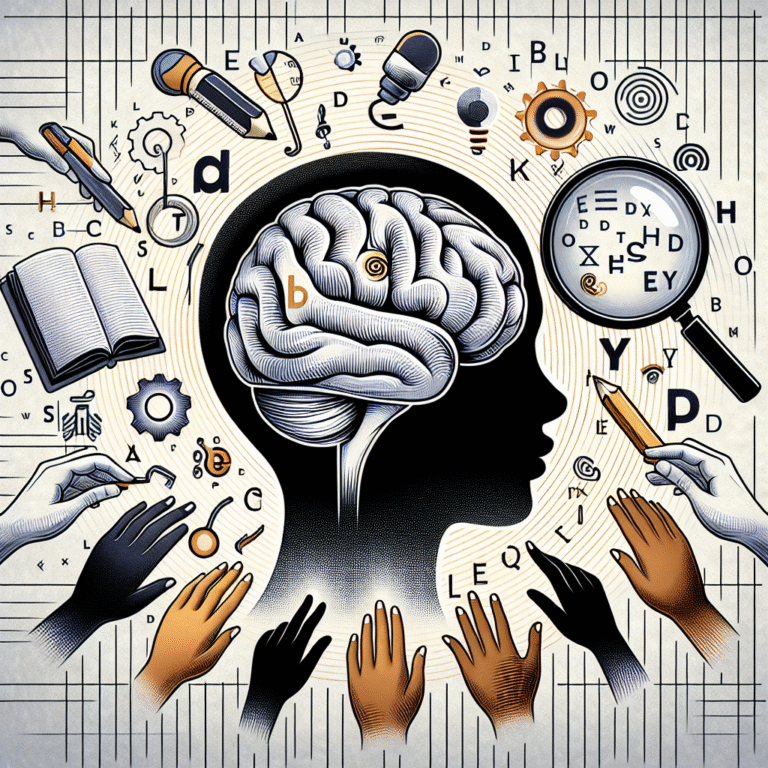
Beyond the Classroom: How to Recognize and Address Learning Disabilities in Children – The Essential Guide
Introduction
Every child is a unique tapestry of skills, strengths, and challenges. Among these, learning disabilities can pose obstacles that might hamper a child’s development and overall success. The importance of recognizing and addressing these learning disabilities cannot be overstated. Beyond the Classroom: How to Recognize and Address Learning Disabilities in Children is a critical endeavor that extends to parents, educators, and communities at large. It’s time to break free from outdated perceptions and stereotypes associated with learning disabilities.
This article will delve deep into the nuances of learning disabilities, offering insights, practical strategies, and real-world case studies to facilitate understanding and support for affected children.
Understanding Learning Disabilities
What Are Learning Disabilities?
Learning disabilities refer to a variety of neurological disorders that affect the brain’s ability to receive, process, and respond to information. Common types include:
- Dyslexia: Difficulties in reading, writing, and spelling.
- Dyscalculia: Challenges with mathematics and number-related concepts.
- Dysgraphia: Affects handwriting and motor skills related to writing.
- Auditory Processing Disorder (APD): Difficulty in interpreting sounds and words.
The recognition of learning disabilities is not limited to academic settings; it transcends into various realms of daily life. By understanding these disorders, we equip ourselves to foster better environments for children in need.
Prevalence of Learning Disabilities
According to the National Center for Learning Disabilities, it is estimated that 1 in 5 children has a learning disability. However, awareness and understanding often lag behind need. As educators and caregivers, recognizing the signs early on is crucial in ensuring that these children receive the support they deserve.
Signs and Symptoms
Recognizing learning disabilities requires an observant eye. Here are some common signs that may indicate a learning disability:
| Disability Type | Symptoms | Early Signs |
|---|---|---|
| Dyslexia | Trouble reading, spelling, and writing | Confusion with letters and sounds |
| Dyscalculia | Difficulty with numbers and math concepts | Avoidance of math-related tasks |
| Dysgraphia | Illegible handwriting, slowness in writing | Difficulty holding writing tools |
| Processing Issues | Difficulty following instructions | Trouble remembering and organizing information |
Early identification is critical. Parents and educators should act on observations promptly, ensuring that appropriate evaluations are conducted.
Beyond the Classroom: How to Recognize and Address Learning Disabilities in Children
Step 1: Observation and Documentation
The first step in addressing learning disabilities is careful observation. Parents, educators, and caregivers play crucial roles in identifying potential issues. Here’s how to systematically observe and document behaviors:
- Keep detailed records: Create a journal listing specific behaviors, challenges, and successes.
- Collect samples: Gather work samples and projects that demonstrate the child’s abilities and struggles.
Case Study: Recognizing Dyslexia through Documentation
Sarah was a bright second-grader who consistently struggled with reading tasks. Her teacher, noticing her frustration during reading activities, began documenting her progress through samples of written work. The teacher noticed consistent letter reversals and struggles with word recognition. Through this documentation, Sarah’s parents sought further evaluation and received a formal diagnosis of dyslexia, leading to specialized educational interventions.
Step 2: Professional Evaluation
Once signs of learning disabilities are noted, a professional evaluation is essential. Seek out qualified educational psychologists or special education professionals who specialize in assessing learning disabilities.
The Evaluation Process
- Observation: A professional will observe the child in various settings to assess behavior and performance.
- Standardized Tests: These tests measure academic achievement and cognitive processing skills.
- Interviews: Conversations with parents, teachers, and the child help paint a fuller picture.
Step 3: Individualized Education Plans (IEPs)
An IEP is a tailored educational program designed to meet the needs of a child with learning disabilities. Here’s how to navigate the IEP process:
Creating an IEP
- Set Goals: Assess the child’s strengths, weaknesses, and set achievable goals.
- Include Services: Determine what support services (like speech therapy or additional tutoring) are necessary.
- Review Regularly: IEPs should be living documents, reviewed at least annually.
Case Study: Implementing an IEP
Tom was diagnosed with dyscalculia in the third grade. After an extensive evaluation, his school developed an IEP that focused on using manipulatives in math, providing extra time on tests, and offering personalized tutoring. The results? Tom not only improved academically but also gained confidence in his math skills, showing the profound impact of a supportive educational plan.
Step 4: Home Support Strategies
Support doesn’t stop at school. There are plenty of strategies parents can adopt at home to complement the academic interventions:
- Create a Conducive Environment: Set up a quiet, dedicated space for homework and study.
- Use Multisensory Techniques: Engage children using visual aids, physical activities, and auditory lessons.
- Establish Routines: Consistent daily schedules help in easing anxiety and improving focus.
Case Study: Home Support for Dysgraphia
Maya, diagnosed with dysgraphia, faced challenges in written assignments. Her parents implemented a routine that included daily practice with drawing and fine motor skills, as well as utilizing technology like speech-to-text software for written assignments. This holistic approach proved transformative for Maya, showcasing the importance of home support in conjunction with educational strategies.
Beyond Traditional Academia: Lifelong Implications
Social and Emotional Considerations
Learning disabilities can extend beyond academic hurdles, impacting social skills and emotional well-being.
- Promote Peer Interaction: Encourage inclusive environments where children with learning disabilities can interact with their peers.
- Foster Self-Advocacy: Teach children to understand their strengths and advocate for their needs.
Preparing for Adulthood
Transitioning into adulthood may present personal and professional challenges for individuals with learning disabilities.
- Life Skills Training: Essential for fostering independence.
- Career Counseling: Seek supportive vocational training programs that cater to diverse learning styles.
Conclusion
Understanding learning disabilities is a vital aspect of nurturing every child’s potential. Beyond the Classroom: How to Recognize and Address Learning Disabilities in Children is a movement that calls for effective actions from parents, educators, and communities. By recognizing signs early, engaging with professionals, and implementing supportive strategies, we can create an inclusive environment where every child has the opportunity to shine.
This journey requires dedication, empathy, and resilience. Remember, the goal is not to label children but to empower them by providing opportunities that allow their unique abilities to flourish.
FAQs
1. What are common signs of learning disabilities in children?
Common signs include difficulty with reading, writing, math, and following directions, as well as frequent frustration in academic settings.
2. How can I get my child evaluated for learning disabilities?
Speak with your pediatrician or school counselor, who can guide you through the evaluation process through educational psychologists.
3. Are learning disabilities hereditary?
While genetics can play a role in learning disabilities, environmental and developmental factors also contribute.
4. Can children overcome learning disabilities?
Many children grow up to lead successful lives with the right interventions, support, and accommodations.
5. How can parents help their children with learning disabilities at home?
Parents can create supportive learning environments, establish routines, and use multisensory learning strategies to enhance understanding.
6. What role do schools play in supporting children with learning disabilities?
Schools provide resources through special education services, tailored educational plans, and trained staff to support children’s learning needs.
Understanding learning disabilities is just the beginning of a rewarding journey. Together, we can ensure that every child receives the recognition and support they deserve, beyond the classroom.
















